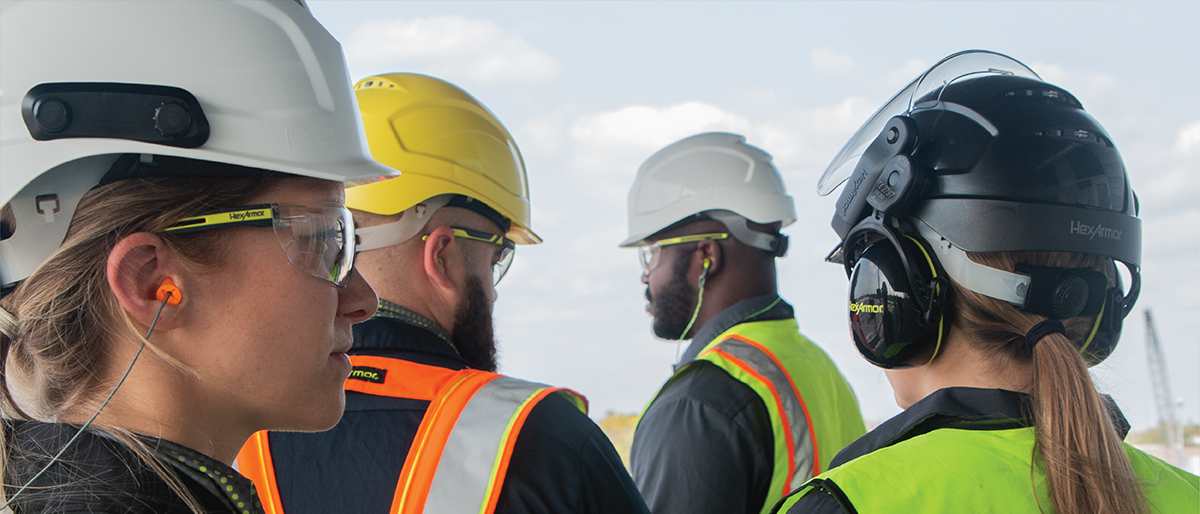
Don't Overprotect your Hearing
Overprotecting your hearing doesn't make you safer - it actually can cause danger.
You could be overprotecting without even knowing it. When earplugs first came out in the 1970s, hazardous noise levels were much louder than they actually are today, therefore requiring attenuations of protection. However, today's environment has new machines, facilities, and processes combined with engineering and administrative controls that have caused noise pollution to decrease considerably. Even modern hearing devices have been updated with wider ranges of protective options to better accommodate various occupational noise hazards.
Yet, many people are still using too-high, static-rated protection. Is this you? If so, what does this mean for you in the workplace?
The Consequences of Overprotection
If you overprotect, that means there is a very small amount of noise you can hear... which isn't necessarily good. With overprotecting, you might not be able to hear potential harm nearby. According to HexArmor, the target level of sound to hear safely is between 70-80 decibels (dB), with safe speech perception at 65 dB. If you wear earplugs that overprotects at a higher attenuation than what's needed for your work environment, you're more prone to take your protection out of your ears to hear your coworker talking to you - which is very problematic, especially in the long term - even if you take them out for five minutes.
The BIGGEST hazard that you can face with overprotecting is not being able to hear the sound of danger coming your way. Failure to hear warning sounds/signs - such as an alarm system, machinery failing, or shouting could put you in real danger. Finding earplug options that offer the correct protection for your application or environments makes a huge difference - ultimately keeping you safer and highly protected on the job.
How much protection is needed?
- It is important that you understand the noise levels in and around your workplace. This can be calculated via a sound audit conducted by a safety professional.
- Understanding the proper fit (both earplug style and decibel level) and proper wear time can help combat overprotection.
Earplugs
AccuFit Corded: has advanced design and safe detection. All-day, low-pressure comfort and compliance.
- Noise Reduction Rating (NRR) of 32 dB, CSA Class A(L)
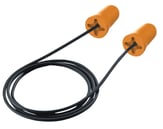
- Designed for use in loud environments (high NRR rating)
- Patented x-grip technology that reduces contact pressure in the ear canal and facilitates easy removal
- The design significantly reduces the amplitude of sound, while still allowing wearers to be alerted to voice and warning sounds
- High density, slow-expanding PU foam delivers premium comfort and fit
AccuFit Disposable: Three sizes (S-L); allows you to find your ideal fit with premium foam construction for all-day, low-pressure comfort and compliance.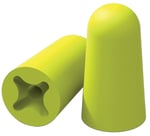
- NRR of 30 dB (small), 32 dB (medium), 33 dB (large); CSA Class A(L)
- Designed for loud environments
- X-grip technology
- Design significantly reduces the amplitude of sound, while still allowing wearers to be alerted to voice and warning sounds
- High density, slow-expanding PU foam delivers premium comfort and fit
- Ergonomic, tapered shape for comfort
SimpleFit Corded Disposable Guided: Guided protection and novel design; offers ergonomic protection with ear canal-shaped pins that easily guide your plugs to an exact, comfortable, secure fit - every time.
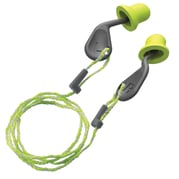
- NRR of 23 dB, CSA Class A(L)
- Oval shaped to match the opening of the ear canal
- High density, slow expanding PU foam for premium comfort and fit
- Ergonomic pins marked left and right with thumb indentations, ensures correct insertion and optimum-fit
- Pins allow for hygienic insertion and removal of the earplugs
- Easy-to-fit replacement earplugs prolong the life of the product
SafeComm Non-Corded: Revolutionary design and safe communication; engineered with an innovative channel for exceptional fit and audible speech perception, blocking the bad and letting in the good.
- NRR of 20 dB, CSA Class B(L)
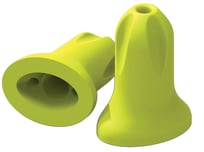
- Oval-shaped opening matches ear canal shape and allows for easier removal
- High-density, slow-expanding PU foam for premium comfort and fit
- Outer grooves allow for larger surface area in the direction of the eardrum to prevent sound build-up in the inner ear
- Fluted, tapered design adjusts to all ear sizes to offer low-pressure comfort
- Scientifically designed channels offer low-pressure comfort while allowing spoke word soundwaves to travel through
Earmuffs
K1-3 Non-Helmet Earmuffs: Ergonomic design meets style and convenience. K-Series™ earmuffs by HexArmor® are engineered for the modern workplace, delivering premium all-day comfort. Has a padded headband for comfort, snug-fitting memory foam ear cushions, and lightweight adjustment options.-jpg-3.jpeg?width=250&name=Untitled%20design%20(33)-jpg-3.jpeg)
K1: NRR of 23 dB, CSA Class B; Designed for low noise environments
K2: NRR of 26 dB, CSA Class A(L); Designed for medium noise environments
K3: NRR of 30 dB, CSA Class A(L); Designed for high noise environments

Want to know more about HexArmor Hearing Protection?
.jpg?width=1500&name=SydneyGraphic-01%20(002).jpg)